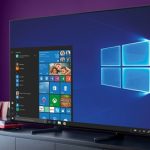Using a TV as a monitor may strain your eyes due to the screen size and distance. However, adjusting settings and taking breaks can help mitigate eye strain.
Many people opt to use a TV as a monitor, whether for work or leisure. However, concerns about the potential negative effects on eye health may arise. This article explores the impact of using a TV as a monitor on eye health, providing insights and tips to help you maintain healthy eyesight while utilizing this setup.
By understanding the risks and implementing proper measures, you can enjoy the benefits of using a TV screen without compromising your eye health.
Understanding The Impact
Blue Light Emission
Modern TVs and monitors emit blue light, which can cause eye strain.
Excessive blue light exposure may disrupt sleep patterns.
Distance And Screen Size
Sitting too close to a TV screen can strain eyes.
Screen size affects ideal viewing distance to prevent eye strain.
Common Eye Problems
Eye Strain
Staring at a TV screen for long periods can cause eye strain.
Dry Eyes
Using a TV as a monitor may lead to dry eyes due to reduced blinking.
Eye-safe Solutions
Using a TV as a monitor may strain the eyes due to its larger size and potential blue light emission. Eye-safe solutions, such as proper positioning, adjusting display settings, and taking regular breaks, can help minimize eye strain and protect eye health.
Adjusting Display Settings
A vital eye-safe solution when using a TV as a monitor is adjusting the display settings. By making a few simple tweaks, you can significantly reduce eye strain and minimize the risk of eye-related discomfort. Start by adjusting the brightness and contrast levels to ensure they are not too high or too low. A bright screen can cause glare, while a dim screen may strain your eyes. Aim for a balanced level that is comfortable for you. Additionally, consider adjusting the color temperature to prevent eye fatigue. Cooler color temperatures with more blue light can strain your eyes, so opt for warmer tones instead.
Using Eye-protective Filters
Another effective eye-safe solution is using eye-protective filters on your TV monitor. These filters act as a protective shield, reducing the amount of blue light emitted by the screen. Blue light has been linked to eye strain and potential damage to the retina over time. By applying an eye-protective filter, you can minimize the exposure to harmful blue light and alleviate eye fatigue. These filters are available in various forms, such as screen overlays or glasses, and can be easily attached to your TV monitor for maximum eye protection.

Credit: eyesafe.com
Optimal Workstation Setup
Ergonomic Considerations
When using a TV as a monitor, it’s essential to prioritize ergonomic considerations to reduce the risk of eye strain and discomfort. Position your TV at eye level to avoid neck strain and ensure it is at an arm’s length distance from your seating position. This helps minimize the need to squint or strain your eyes, promoting a more comfortable and enjoyable viewing experience. Additionally, invest in an adjustable chair and consider using an ergonomic keyboard and mouse to support proper posture and reduce the risk of repetitive strain injuries.
Taking Regular Breaks
It’s crucial to take regular breaks to reduce the strain on your eyes when using a TV as a monitor. Follow the 20-20-20 rule: every 20 minutes, glance away from the screen at an object 20 feet away for at least 20 seconds. This simple practice can help alleviate eye fatigue and prevent eye strain. Additionally, consider setting a timer to remind yourself to take breaks and engage in short stretches or eye relaxation exercises to maintain optimal eye health.
Additional Tips
Additional tips for using a TV as a monitor can help minimize the strain on your eyes and promote a healthier viewing experience. It’s essential to take proactive measures to mitigate potential eye discomfort and vision issues that can arise from extended screen use.
Avoiding Glare
To minimize glare, position the TV away from direct light sources. Use curtains or blinds to control light levels in the room. In addition, consider investing in an anti-glare screen protector for your TV to further reduce glare and reflections.
Maintaining Proper Lighting
Ensure that the room where the TV is located is adequately lit. Avoid having bright lights directly behind or in front of the screen. Opt for ambient lighting that evenly illuminates the room without creating harsh contrasts. Additionally, taking regular breaks to rest your eyes can help reduce strain and fatigue.

Credit: www.amazon.com

Credit: www.amazon.com
Frequently Asked Questions Of Is Using A Tv As A Monitor Bad For Eyes
Why Shouldn’t You Use A Tv As A Monitor?
Using a TV as a monitor may lead to eye strain due to pixel density. TVs are designed for distance viewing, not up-close computer use. Text may appear blurry, causing discomfort during prolonged use.
Are Tvs Better Than Monitors For Eyes?
TVs are not better than monitors for eyes due to higher blue light emission. Monitors have lower blue light and flicker-free technology, making them easier on the eyes.
Are Led Tvs Bad For Your Eyes?
LED TVs do not directly damage your eyes. However, prolonged exposure or improper use can cause eye strain. It is recommended to take breaks, adjust lighting levels, and maintain a proper viewing distance to minimize any potential discomfort.
Is It Bad For Your Eyes To Watch Tv On A Laptop?
Watching TV on a laptop is not bad for your eyes, but prolonged viewing can cause eye strain. To reduce it, take breaks and adjust screen settings for less glare. Using proper lighting and sitting at a distance also helps.
Conclusion
While using a TV as a monitor may offer benefits such as a larger screen and enhanced gaming experience, it is important to consider the potential impact on our eyes. Extended exposure to the blue light emitted by TVs can strain our eyes and disrupt our sleep patterns.
To mitigate these risks, it is advisable to adopt healthy viewing habits, such as taking regular breaks, adjusting display settings, and utilizing blue light filters. Prioritizing our eye health should always be a top priority, ensuring a balanced and comfortable digital experience.








